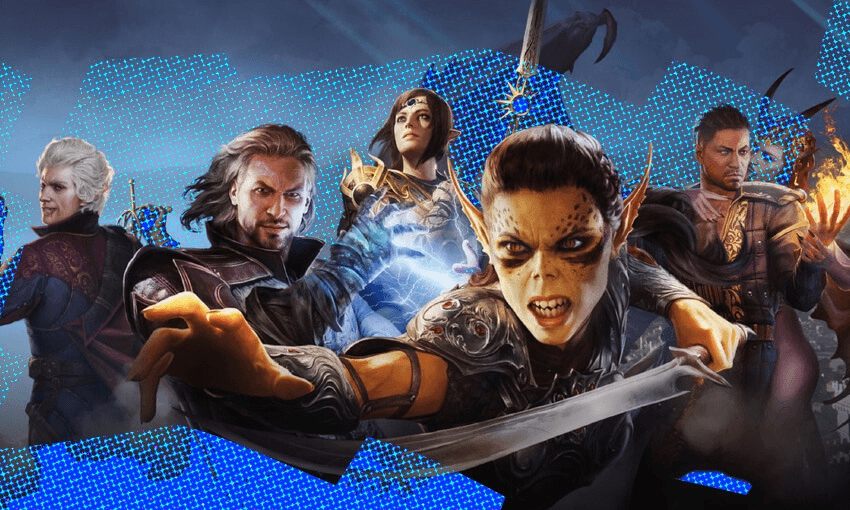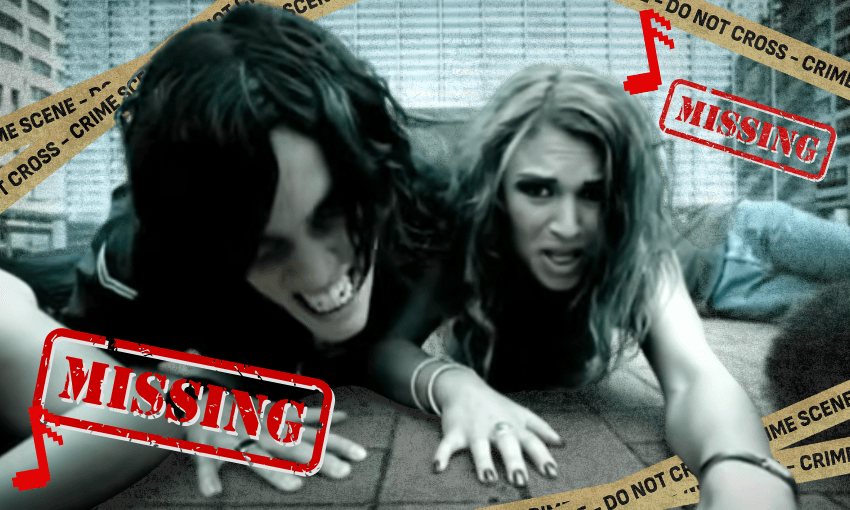One of the biggest games of the year seeks not to reinvent the wheel, but instead make the best wheel possible, writes Sam Brooks.
What’s all this then?
Baldur’s Gate 3 is the biggest role-playing game of the year, give or take a Final Fantasy or a Starfield. It is, very loosely, the third game in the Baldur’s Gate system, set in the highly popular Forgotten Realms Dungeons and Dragons setting. If you know what that is, then you probably already own this game. If you don’t, it’s pretty much the first thing you’d picture when you imagine a Dungeons and Dragons campaign: it has dungeons, it has dragons, it has a rulebook that can be as simple or as complex and the player likes.
Setting aside, Baldur’s Gate brings the Western RPG kicking and screaming into the 2020s. The division of Western RPG and Eastern RPG has not been without controversy, but it remains a broad, if unfortunate, way of defining a developer’s approach to the genre. Eastern RPGs tend to have highly constructed plots with little player agency and extremely detailed, idiosyncratic design often inspired by myth, fairytale and anime. Final Fantasy is the most famous example of this (although you could argue that XVI isn’t much of an RPG at all).
The Western RPG, on the other hand, finds its heritage in tabletop gaming. These games value agency, more often than not allowing the player to create their own character and meander through a branching plotline. Mechanics are often lifted wholesale from tabletop (in Baldur Gate 3’s case, Dungeons and Dragons 5e), there is often a lot of room for the player to choose their own path, be it moral, immoral, amoral or just damn stupid.
Baldur’s Gate 3 represents the biggest swing for the Western RPG in years – but does it succeed? Broadly, yes.
The good
This is the Western RPG at its most ideal – the closest a video game will get to playing a Dungeons and Dragons campaign. The first thing you do is painstakingly create a character, choosing their race and class, then building their skills to your desire, then partaking in a pleasingly but not overly-detailed character creator so the face you’ll be looking at is exactly the face you want to be seeing. My character? A High Elf sorceress called Brooks, because “Sam” doesn’t feel like quite the vibe of the Forgotten Realms.
The gameplay lifts entirely from the 5e rulebook, as closely as developer Larian’s previous games Divinity and Divinity II lifted from those D&D. Anything your character wants to do in the game, beyond walking, requires a check against your skills and abilities. For example, the charisma-based Brooks was able to deceive a group of three trolls into working with them to take down a goblin camp, but was completely unable to perceive a tripwire trap in front of her, due to low dexterity. This might feel frustrating to a new player, but it’s really not much further than what BioWare did with Dragon Age, although it requires you to pay a lot more attention to your ability and skill levels. Your fighter with eight points in Intelligence is probably not able to decipher those runes, so maybe get your wizard to do it.
This extends to combat, which is arguably the highlight of the game. It’s fully turn-based, allowing the player to properly factor in character placement and strategize. Smaller skirmishes rarely take more than a few minutes, while more epic battles can take up to an hour. It’s here that Larian’s work really shows, and it’s the closest that the game actually feels to a Dungeon and Dragons campaign, with a DM looming overhead, strategizing just as hard as you are.
Speaking of that campaign, it’s pretty standard D&D fare. Yes, there are mind flayers. Yes, there are companions who have dark secret pasts that they seem more than happy to share with you after spending only a few hours with you. And yes, there are morality choices that are perhaps needlessly divided down the binary of “saintly” and “reprehensible” rather than grayer sides of good and evil. It treads familiar territory with solid footing.
BG3 is also, by far, the most polished Western RPG I’ve ever played. For a genre that values the ability to let the player do whatever they like, however they like, no matter how much it screws them over in the long term, that’s no small feat. Throughout my 30-plus hours with the game, I encountered nary a glitch.
The not-so-good
That polish, however, doesn’t always work to the game’s benefit. There is a sheen that feels, if not necessarily disingenuous to the genre, then like a shedding of skin. One of the best things about this genre, about the incredible level of agency it allows, is that it can often be a bit janky. The most creative, initiative-ready player should be able to beat the game by breaking it. It feels like BG3 is one step ahead of the player at every point, so it feels like the dungeon master who knows the rulebook inside and out – not necessarily for the player’s benefit, but so that they don’t break it. It’s well-baked, but not fresh out of the oven.
Which is more to say that everything’s a bit too clean, too smooth. The graphics don’t reflect a world in ruin, or even strife, and even your githyanki companion, Lae’zel, who hails from one of the canonically “ugly” races in the setting, is presented as being more cute than interesting (and like every companion you run across, she can be romanced, remarkably quickly).
Part of the joy of a D&D campaign is the friction, the interplay between player and DM, figuring out how they can make the rulebook work for them best. That friction isn’t quite there in BG3, and in a game that seeks to emulate that campaign experience as closely as possible in video game form, it’s pretty obvious.
The verdict
Baldur’s Gate 3 is exactly what it wants to be: a polished, expansive Dungeons and Dragons campaign where the only limits to a player’s exploration and success are their own creativity (and the roll of the dice). But by showing what a Western RPG can be, it also shows the limits of this specific genre. It didn’t leave me wanting more, but wanting something a bit different. And really, that’s on me, not the game. If what you want is a Dungeons and Dragons campaign, with a controller and a TV screen instead of a bunch of mates and a rulebook, look no further.
Baldur’s Gate 3 is available now on Windows, MacOS, Playstation 5 and Xbox Series X/S. This game was played for 35 hours.



